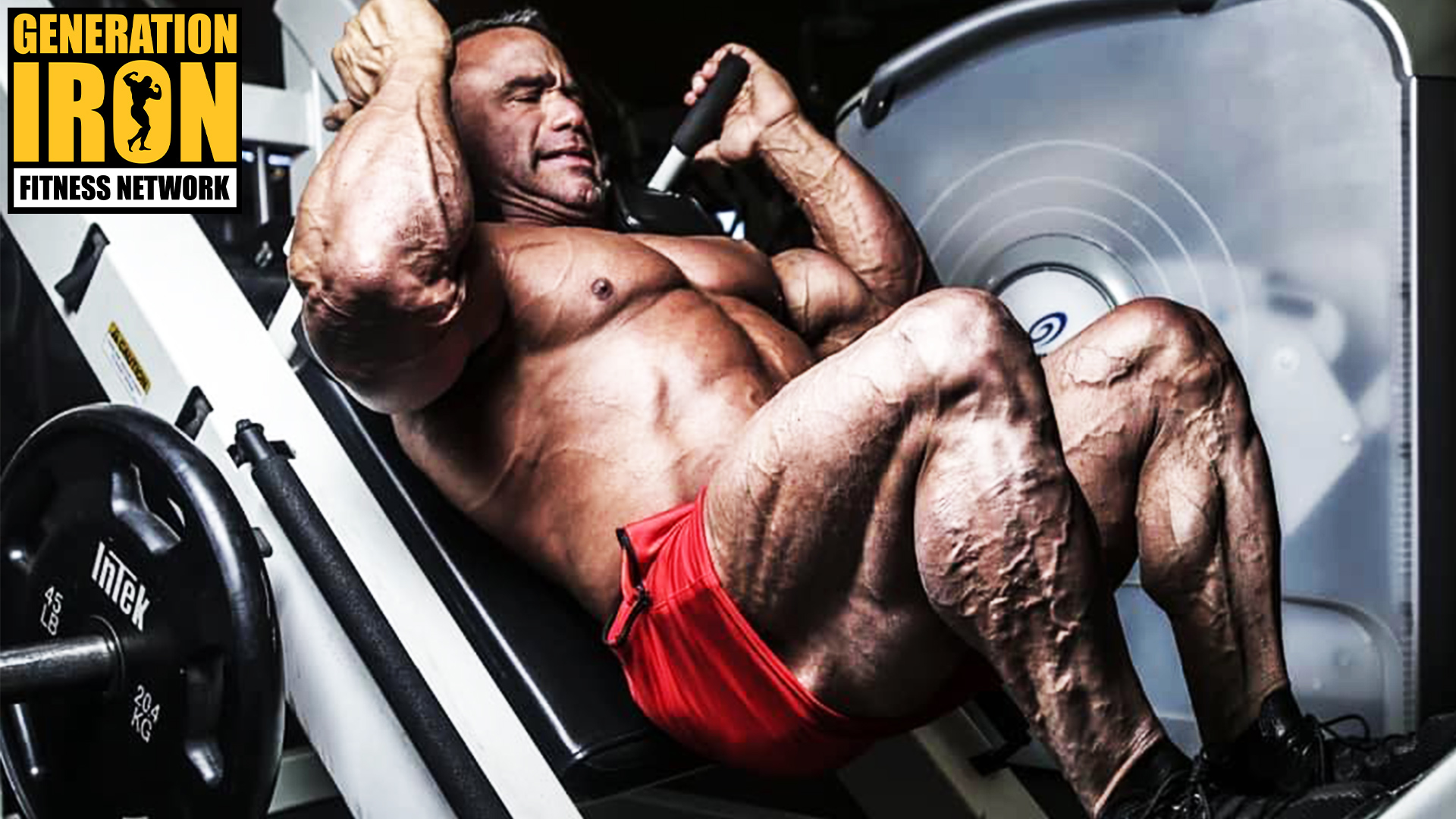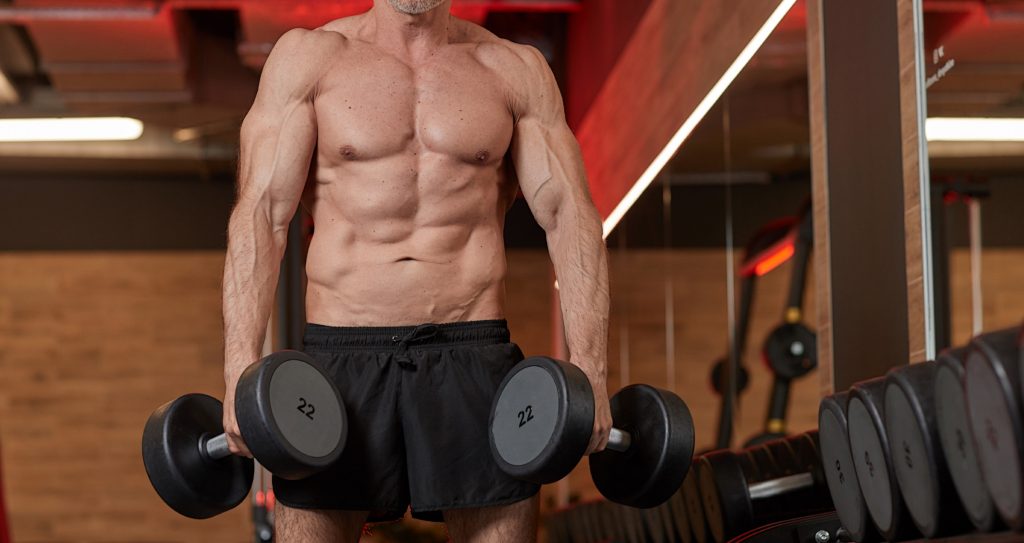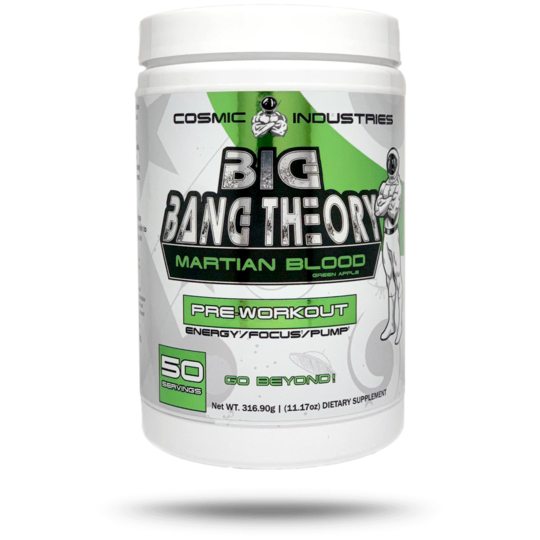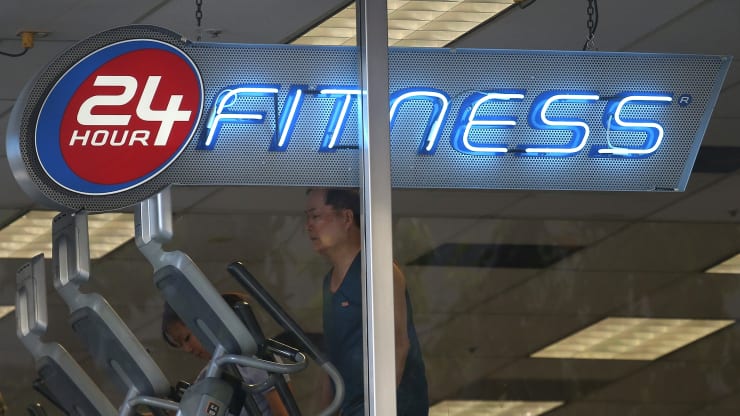Tag: Bodybuilding

Jose Raymond Breaks Down His Bodybuilding Comeback Training Routine
Jose Raymond shares insight into his comeback training claiming it’s the first offseason he’s ever had in his life.
In our previous interview segment, Jose Raymond confirmed that he’s planning on making a comeback to Men’s 212 bodybuilding. Or at least, he’s training to compete again to see how his body reacts. If he’s happy with the results, he will pick a show to compete in and re-ignite his journey. But after many years away from tried and true contest prep, what is Jose’s tactic to get back on the saddle? In our latest GI Exclusive interview, Jose Raymond breaks down his bodybuilding comeback training routine.
Jose Raymond had a series of unfortunate situations that prevented him from competing over the past few years. But after full recovering from surgery, he’s ready to jump back into action and return to a competitive level of training. During our recent video conversation, we asked him to share what that comeback training looks like and how it differs from his past tactics.
“This is the most different I’ve ever been in my life”
Right off the bat, Jose Raymond makes a point to say that this training process is different than he’s ever experienced before. More specifically, he claims it is the first true off season he’s ever had in his life. Throughout his career, he’s always competed in so many shows – that he never had time for a real off season. He always had to stay in a contest prep level of conditioning due to a competition right around the corner.
So perhaps for the first time since he originally started bodybuilding, he is going into a true offseason bulk phase. Meaning that he can focus purely on building size without worrying about strict conditioning.
In terms of diet, Jose Raymond is currently eating 100 grams of carbs per day. He’s not the kind of bodybuilder to eat sloppy – but he’s also using this opportunity to really focus on building size and worrying less about conditioning at this moment. That means allowing for more heavy foods and carbs in his diet.
[embedded content]
Check out our latest GI Exclusive with Jose Raymond above!
Lower weight with high volume… with a few exceptions
Jose Raymond also dives into his training regimen. He’s doing very little cardio. This is again because he’s focusing on building mass at the moment. He does about 30 minutes of cardio, very light, on a treadmill or stepmill.
Being a bit older and wanting to prevent injury, Jose Raymond is focusing less on heavy weight and more on high volume. In a traditional set he aims for approximately 12, 15, or 18 reps. Though he admits sometimes he will feel energized and try and go all out with some truly heavy weight.
He also does, in a sense, drop sets. Thought perhaps not as strict as a traditional drop set would be. After he gets to a point with his high volume sets where he can only do six to eight reps. He will do one extra set. He lowers the weight and tries to do as many reps as possible. Sometimes reaching up to 20 or 22 reps. This is to make sure that he’s truly exhausted the muscle.
Wrap Up
Ultimately, Jose Raymond is excited to be able to focus on building as much size as possible. He’ll see how his body reacts. And then will evaluate his options and decide what show he wants to compete in. Once he decides that, of course, real contest prep begins. He’ll go back to what he knew for most of his career – focusing on conditioning. We can’t wait to see what show he’ll appear in and how he’ll compare to the new era of competitors.
You can watch Jose Raymond go into even more detail about his bodybuilding comeback training regimen in our latest GI Exclusive interview segment above!

Eating Carbohydrates While Dosing IGF-1 And Insulin
Q: My question is about carbs and how much to take with insulin,and IFG1 LR3. I’ve determined that it is about 10g of carbs per 1iu of insulin, but how about with these other things? How many more grams would I need if I were doing 70mcg of IGF1?
A: Well, here’s the thing… there are a lot of folks that would tell you that you should not do IGF1 and insulin at the same time simply because of the risks, not because it doesn’t work well together – it does. Insulin is something that a novice bodybuilder should not take. We say that not out of being prudish or judgmental, but because insulin is such a precise drug and not to be messed with if you don’t know what you’re doing. We gather you do not, so it probably merits a discussion. You need to do some research before injecting something that can push you into a coma in a matter of minutes if you get it wrong. But back to your question… the 10g carb rule is somewhat a general rule and one that illustrates that you have maybe read a few articles and then decided insulin is for you. It’s so much more complex than that. But IGF1 works well with insulin because insulin increases the half-life of the IGF in your body. BUT, IGF1 makes insulin MUCH MORE potent, which is why people say that it isn’t a good combination for hardly anyone, let alone a novice. Taking 3iu’s of insulin with IGF1 is like taking 6! Many bodybuilders who have taken both can attest to this fact.
Here’s a good guide to follow:
IMPORTANT / CRITICAL – Post Insulin Nutrition
Humalog – Workout days only
8IU’s immediately post workout, intramuscular
Immediately after Humalog injection:
Injection + 5 minutes – drink shake with 10g glutamine / 10g creatine / 55g dextrose (7 grams per IU of Insulin)
Injection + 15 minutes – drink shake with 80g of whey isolate protein in water
Injection + 60 – 75 minutes – eat a protein / carb meal with 40-50g of protein, 40 to 50g of carbs, NO FATS (you may wish to add another whey isolate protein drink with this meal)
Avoid fats for 2-3 hours for Humalog IM
for 3-4 hours for Humalog subQ
for 4-5 hours for Humulin-R.
Always keep some glucose tablets or other simple carbs on hand (Orange Juice, Full sugar Coke, etc.) for the active window of your insulin. Hypo symptoms can and will hit hard and fast and you will have little time to react. This is the main danger of insulin use. Be prepared because Arimidex is a good.

Struggling to Build Muscle? Here’s Why Your Muscle Fiber Type is Important
Genetics Play an Important Role in How Much Muscle You Build
Have you ever struggled with building muscle no matter how hard you try? If that’s you, then don’t be too hard on yourself. It’s because of your genetics, specifically, the muscle fiber type you were innately equipped with.
You see, your muscles are made up of muscle fibers, which consist of fast-twitch and slow-twitch fibers. Depending on which one you have more of, will determine how much muscle and strength you build and your capability to excel at certain physical activities.
Read the rest of this article to learn about the different muscle fiber types, and what they’re best for.
How to Build Muscle
To build muscle, you need to place your muscles under enough stress that causes them to grow. You do this via resistance training, a caloric surplus, and the progressive overload principle. Of course, you need to do resistance training via lifting weights to build muscle. It’s also important to eat enough calories and protein and follow the progressive overload principle, increasing the weight you’re lifting as often as possible.
These are the key principles to practice to build muscle, however, they’ll only get you so far, even if you’re doing everything right. That’s because a big culprit to the amount of muscle you’re able to build is based on your genes (1). That’s right! If you build muscle fairly easily, then it’s likely because you won the genetic lottery when it comes to weight training. On the contrary, if it’s hard for you to build muscle no matter how hard you try, it’s likely because you were dealt a bad hand in the gene pool.
In fact, a great portion of your strength and muscle mass potential has to do with your genetics.
Body Types
Before we dive into the specifics of the different muscle fiber types, let’s first take a look at the different body types, somatotypes. Your somatotype is more or less your body’s natural build, and there are three types: ectomorph, mesomorph, and endomorph.
Below, there’s a list of the difference between each one.
Somatotypes
Ectomorph: naturally skinny, hard to build muscle, but also hard to gain fat e.g., skateboarder.
Mesomorph: not too skinny, not too big, fairly easy to build muscle and lose weight if on a proper regimen e.g., NFL wide receiver.
Endomorph: big, builds muscle easily, hard to lose fat e.g., Bodybuilder.
You may have heard of these before, and they play a role in your body’s natural frame and your ability to lift weights. For example, an endomorph will likely be stronger than an ectomorph since they are more massive, however, ectomorphs can cheat more on their diet since it’s harder for them to gain weight.
Although your body type is important when it comes to your body frame, your muscle fiber type is a good determiner of how much muscle and strength you’ll be able to pack on your frame.
What Is Muscle Fiber?
Your skeletal muscle is made of muscle fibers, individual contractile cells within a muscle that is responsible for allowing the muscle to produce force and motion. Depending on the amount of each muscle fiber that makes up most of your muscle, will determine how much force and the power output they’re able to produce (2).
Muscle Fiber Types
There are two basic types of muscle fibers, slow-twitch, and fast-twitch. Depending on which one you have more of will determine your innate ability to lift weights and how much strength and muscle you build. Of course, following a structured program and doing everything right to maximize your muscle growth is a huge part of building muscle, however, everyone’s got a genetic potential, and unfortunately (or fortunately, depending on where you fall in the genetic pool and what your goal is), your genetics play an enormous role in how much strength and muscle mass you do gain.
Fortunately, even if you don’t fall on the end of having the right fiber type that’s churned to build you the most muscle and strength possible, you’ll have other benefits that the genetic freaks lack. Let me explain.
Fast-twitch muscle fibers are meant for short, explosive bursts e.g., sprinting, powerlifting, whereas slow-twitch muscle fibers types are for endurance activities e.g., marathon runners, long-distance swimmers. More specifically, there are three types of muscle fibers: slow oxidative, fast oxidative (fast-twitch IIA), and fast glycolytic (fast-twitch IIB).
Fast-twitch Muscle Fibers
Fast oxidative fibers use your anaerobic energy system to produce ATP and produce stronger contractions than slow oxidative fibers.
Fast-twitch Activities
Powerlifting
Sprinting
Jumping
Strength and agility training
These are activities important for many sports, including football, basketball, and UFC.
Specifically, fast-twitch type IIA fibers are best for the sports and movements that produce the most force e.g., powerlifting, 40 yard-dash, 100m sprint. Fast-twitch type IIB fibers, aka intermediate muscle fibers, are primed for activities that are explosive but not quite as explosive as fast oxidative fibers (think the 400m sprint, 200m sprint, or lifting medium-heavy weight within a medium rep range).
Researchers at Ball State University sampling muscle tissues of the world-record holder for the 60-meter hurdles in the 80s found his quad muscles to contain 71% fast-twitch fibers (3).
Slow-twitch Muscle Fibers
Slow oxidative fibers rely on your aerobic energy system to contract over long periods and are slow to fatigue.
Slow-twitch Activities
Cycling
Running
Rowing
Although elite sprinters have more fast-twitch fibers, elite endurance athletes, such as cross-country skiers have mainly slow-twitch muscle fibers — 60-80% of their muscle fibers (4).
Everyone’s born with a certain amount of both fiber types. Although you can train yourself to utilize more of one fiber type than the other, a good portion of your potential to maximize one is what you were innately born with (5). With that being said, both fiber types do have their drawbacks.
Pros and Cons of Different Muscle Fiber Types
If you’re a bodybuilder, powerlifter, weightlifter, or average gym-goer looking to build muscle, then you’ll benefit the most from having a lot of fast-twitch muscle fibers. If you don’t naturally have a lof fast-twitch muscle fibers though, it’s okay. You can train your body to maximize the most it’s capable of producing by training smartly. Also, you’ll have a lot more endurance since you’ll have more slow-twitch muscle fibers, which comes in handy for many tasks as well, including a pickup game of basketball, running, and other endurance sports.
If you’re an endurance athlete, then you’ll benefit the most from having more slow-twitch muscle fibers than fast-twitch ones. The con to this is obviously that you won’t be able to build as much strength or pack on as much muscle.
Genetic’s Role
Now that you know the differences in different muscle fiber types and their role in physical activities, you probably have a general idea of which one your body has more of. If you’ve generally struggled with building muscle mass and building strength, then likely you have more slow-twitch muscle fibers. So next time you see a freak of nature in the gym, just remember that it’s likely because they were blessed with more fast-twitch muscle fibers.
Although for most people, you’ll have a split of 50/50 fast-twitch muscle fibers and slow-twitch muscle fibers (6).
Conclusion
There’s a lot you can do to maximize your strength and muscle mass, however, it’s to a certain extent. Unfortunately, your genetics and the muscle fiber type you have more of naturally play a big role in how much strength and muscle you’re capable of producing.
You have both fast-twitch and slow-twitch muscle fibers. Fast-twitch muscle fibers are better for building muscle and explosive activities, including powerlifting and sprinting, while slow-twitch muscle fibers are better for endurance activities, such as rowing and swimming.
Not being able to build as much strength and muscle mass due to having fewer fast-twitch fiber types isn’t necessarily bad though. It means you’ll dominate endurance activities.
Which muscle fiber type do you have more of? Let us know and follow us on Facebook, Instagram, and Twitter.
References
1 – Verbrugge, S., Schönfelder, M., Becker, L., Yaghoob Nezhad, F., Hrabě de Angelis, M., & Wackerhage, H. (2018). Genes Whose Gain or Loss-Of-Function Increases Skeletal Muscle Mass in Mice: A Systematic Literature Review. Frontiers in physiology, 9, 553. https://doi.org/10.3389/fphys.2018.00553
2 –Wayne Scott, Jennifer Stevens, Stuart A Binder–Macleod, Human Skeletal Muscle Fiber Type Classifications, Physical Therapy, Volume 81, Issue 11, 1 November 2001, Pages 1810–1816, https://doi.org/10.1093/ptj/81.11.1810
3 – Trappe, S., Luden, N., Minchev, K., Raue, U., Jemiolo, B., & Trappe, T. A. (2015). Skeletal muscle signature of a champion sprint runner. Journal of applied physiology (Bethesda, Md. : 1985), 118(12), 1460–1466. https://doi.org/10.1152/japplphysiol.00037.2015
4 – Holmberg, H.‐C. (2015), The elite cross‐country skier provides unique insights into human exercise physiology. Scand J Med Sci Sports, 25: 100-109. https://doi.org/10.1111/sms.12601
5 – Jansson, E., Esbjörnsson, M., Holm, I., & Jacobs, I. (1990). Increase in the proportion of fast-twitch muscle fibres by sprint training in males. Acta physiologica Scandinavica, 140(3), 359–363. https://doi.org/10.1111/j.1748-1716.1990.tb09010.x
6 – Fry, A. C., Webber, J. M., Weiss, L. W., Harber, M. P., Vaczi, M., & Pattison, N. A. (2003). Muscle fiber characteristics of competitive power lifters. Journal of strength and conditioning research, 17(2), 402–410. https://doi.org/10.1519/1533-4287(2003)0172.0.co;2

New Fitness Coaching App “P3AK DAY” from IFBB Pro Heinz Senior
MuscleChemistry 22nd Spring SpeciaOur 22nd ANNUAL SPRING SALE! BEST IGF-1 lr3 Prices Ever Offered! Sale ENDS April 23rd IGF-1 Guide to Lean mass building SARM Sciences (BUY 2) Get 3rd FREE Free “LETSFIT” True wireless Bluetooth Earbuds When You Spend $200 BUY 1 Get 1 FREE On ALL Anti-E…

1-ON-1 Coaching With IFBB Pro Heinz Senior
ABOUT HEINZ SENIOR Heinz Senior became a Personal Trainer since 1992 after 4 years bodybuilding and winning several shows, and an Online coach since the internet started. Trained 1000’s of athletes, bodybuilders and other sports, and also people that wanted to lose weight, tone up and lose fat. Heinz is certified to train people with…

Free (LetsFit) True Wireless Bluetooth Earbuds
Free (LetsFit) True Wireless Bluetooth Earbuds (BUY 8) IGF-1 LR3 + FREE SARM + FREE ANTI-E Special Offers on Peptides, Sarm Sciences, MCAS Anti-E BUY 2 SARM GET ANY 3RD SARM FREE! LIMITED TRIME OFFER ONLY!! When Placing Your Order At Checkout Please Write Into Comments Feild Which Free Sarm You Want FREE. WE…

IFBB Mr. Olympia Weekend Will Be Postponed This This Year.
IFBB Mr. Olympia Weekend Will Be Postponed This This Year. There has been much speculation as to whether or not the Mr. Olympia 2020 would be rescheduled or even worse cancelled. With many major events around the world already pushing back dates that were meant to be held this fall and winter – it seemed…

Cosmic-Industries Bodybuilding Supplements
With The Supplement Industry being the money making machine it is today , its hard to keep track of all the new supplement companies and brands that continue to hit the market. Every once in a while one or two might grab your attention due to its catchy name, or some flashy new ad you…

24 Hour Fitness weighs bankruptcy as coronavirus pushes fitness industry to brink
Gym chain 24 Hour Fitness is working with advisors at investment bank Lazard and law firm Weil, Gotshal & Manges to weigh options including a bankruptcy that could come as soon as the next few months, people familiar with the matter tell CNBC. The chain is grappling with a heavy debt load, deteriorating performance and…

